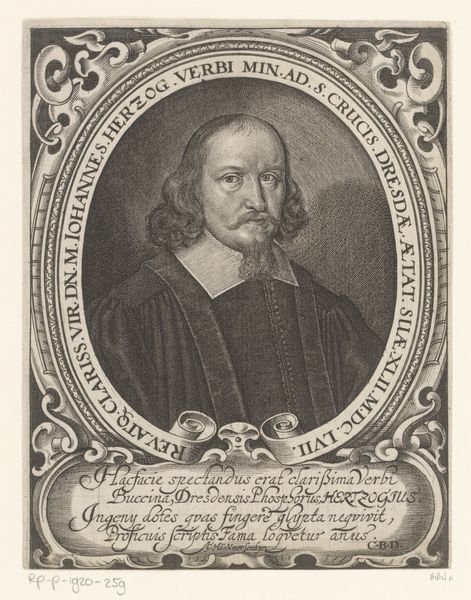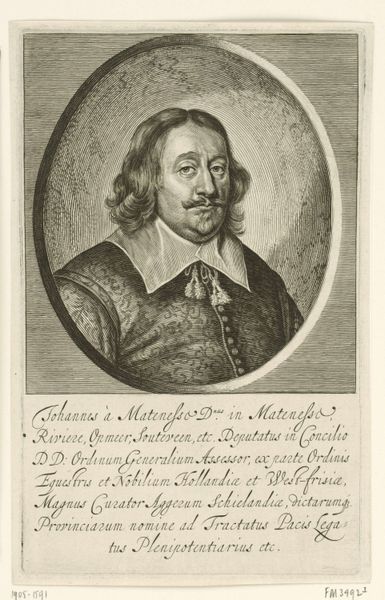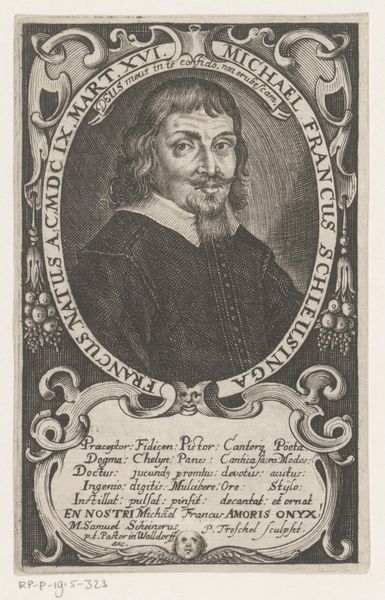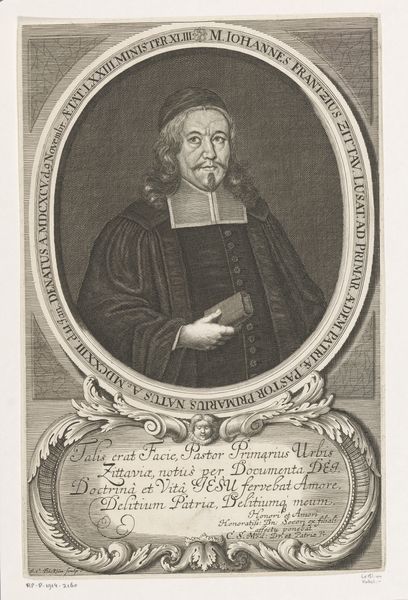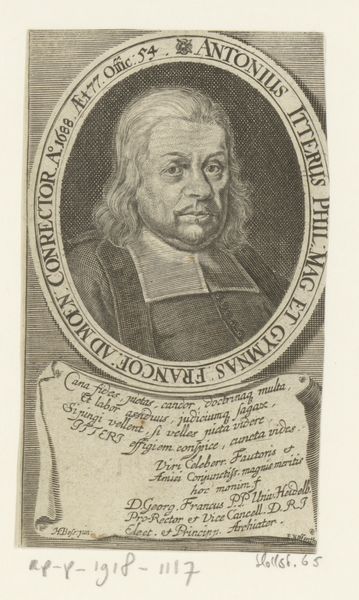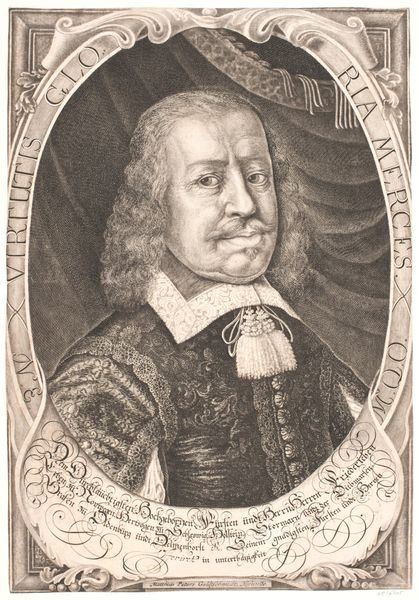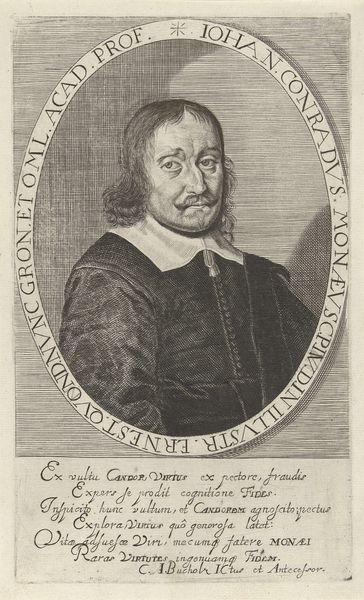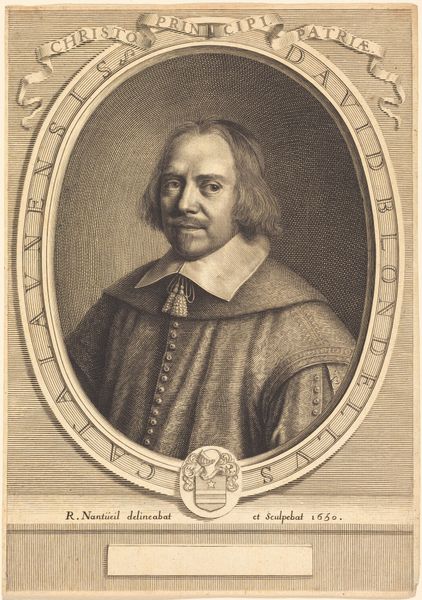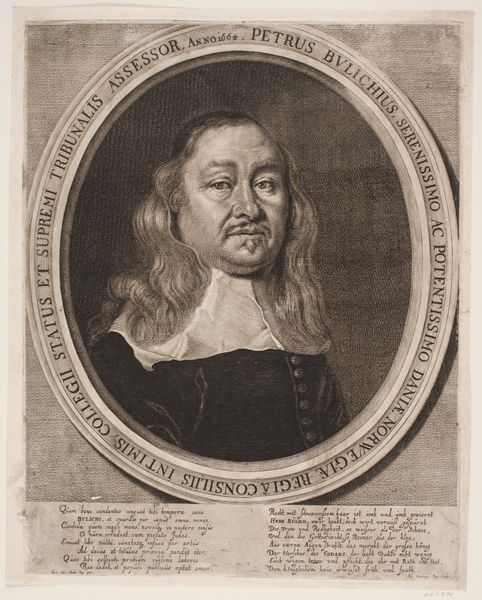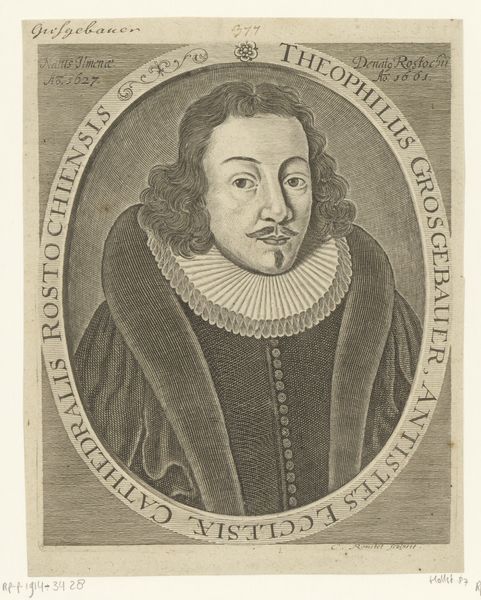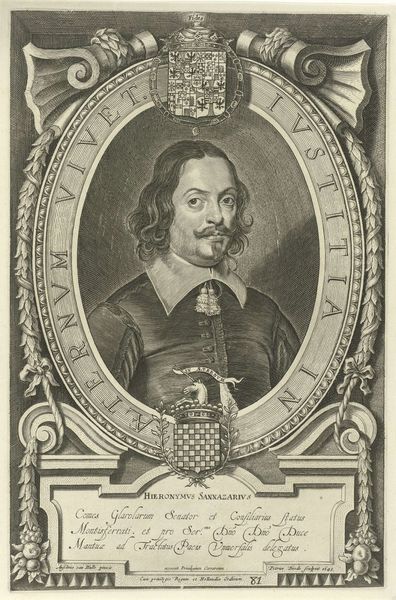
print, engraving
#
portrait
#
baroque
# print
#
old engraving style
#
portrait reference
#
history-painting
#
engraving
Dimensions: height 171 mm, height 117 mm
Copyright: Rijks Museum: Open Domain
Editor: We are looking at a print titled “Portret van Marquard Freher,” dating somewhere between 1606 and 1666. It’s attributed to Peter Aubry and resides in the Rijksmuseum. It’s an engraving, very detailed… What I find striking is the contrast between the serious portrait and the somewhat playful cherubs flanking it. How would you interpret this piece, especially considering its historical context? Curator: That's a keen observation. Given this is a portrait, particularly a print intended for wider distribution, the playful cherubs contribute to the construction of Marquard Freher's public image. The flanking cherubs can be read through a lens of Baroque symbolism. Who was Freher and how was he situated socially and politically at the time of its creation and dissemination? Was he an intellectual or was this image one in a series circulated to further enhance his legacy? Editor: Historical sources tell us Freher was a distinguished jurist. Does knowing his profession change the way we understand those cherubs and the text that is written in Latin at the bottom of the image? Curator: Absolutely. Considering Freher's legal background, the cherubs may represent allegorical figures of Justice or Wisdom, appealing to a learned audience. Furthermore, the text is integral: It's designed to frame his intellectual accomplishments for contemporaries. The portrait then isn’t merely a likeness but an assertion of status within a specific social and intellectual milieu. These details, like the precise lettering, catered to an elite public steeped in classical education. Editor: So, understanding the print’s original audience really unlocks its meaning, going beyond just aesthetics. Curator: Precisely. The “aesthetics” *are* the vehicle to further assert not only Marquard Freher's importance but to also convey an implicit understanding about how and who will receive this message. This illuminates the power of imagery to promote an idea within 17th-century society. It wasn’t just art for art's sake, it was strategic. Editor: I’ve never considered the distribution and cultural messaging of prints. Thank you.
Comments
No comments
Be the first to comment and join the conversation on the ultimate creative platform.
